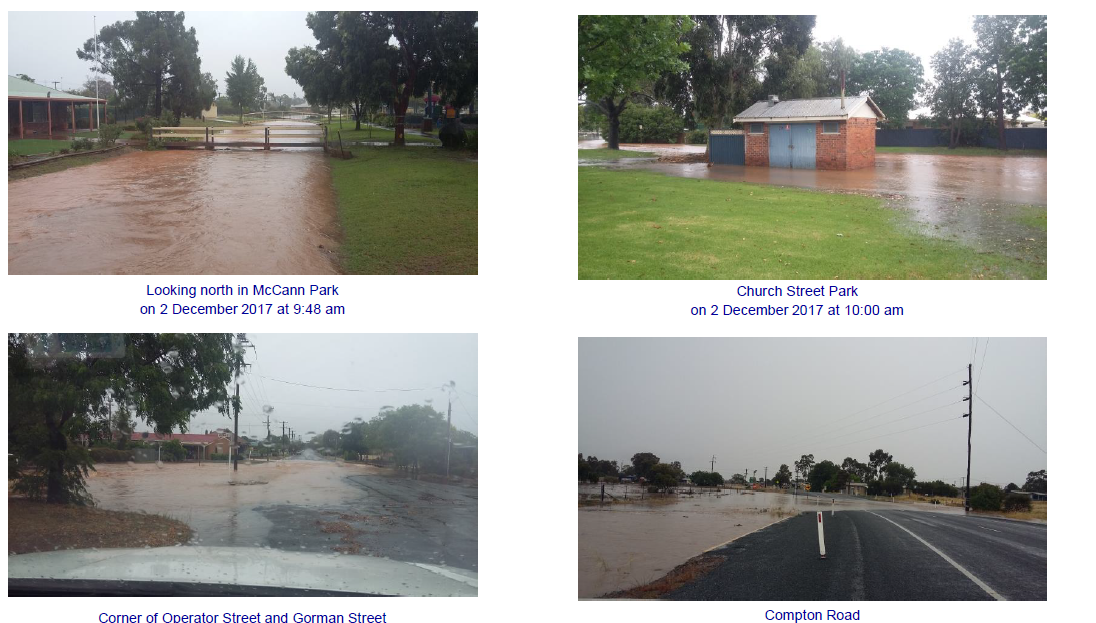Wyalong and West Wyalong Flood Study Report
 Wyalong and West Wyalong Flood Study
Wyalong and West Wyalong Flood Study
The primary objective of the Flood Study was as stage one of a two stage approach to gathering data on the flooding impacts within the townships of Wyalong and West Wyalong. The flood study modelled inundation data across the catchment under varying conditions. This plan was developed through funding from the NSW Government by consulting Engineers Lyall and Associates through community consultation, use of historical rainfall and flooding data which included photographic evidence gathered during various historical events.

This data is now being used to develop Stage 2 being the Flood Plain Risk Management Plan which will set planning parameters around flood heights that will inform future developments. The Flood Plain Risk Management Study will also inform Council of issues within the network and options available to mitigate flooding impacts in the drainage system through the implementation of remedial works. The Flood Plain Risk Management study is also funded by the NSW State Government with preliminary works commenced and anticipated to be finalised by mid 2025.